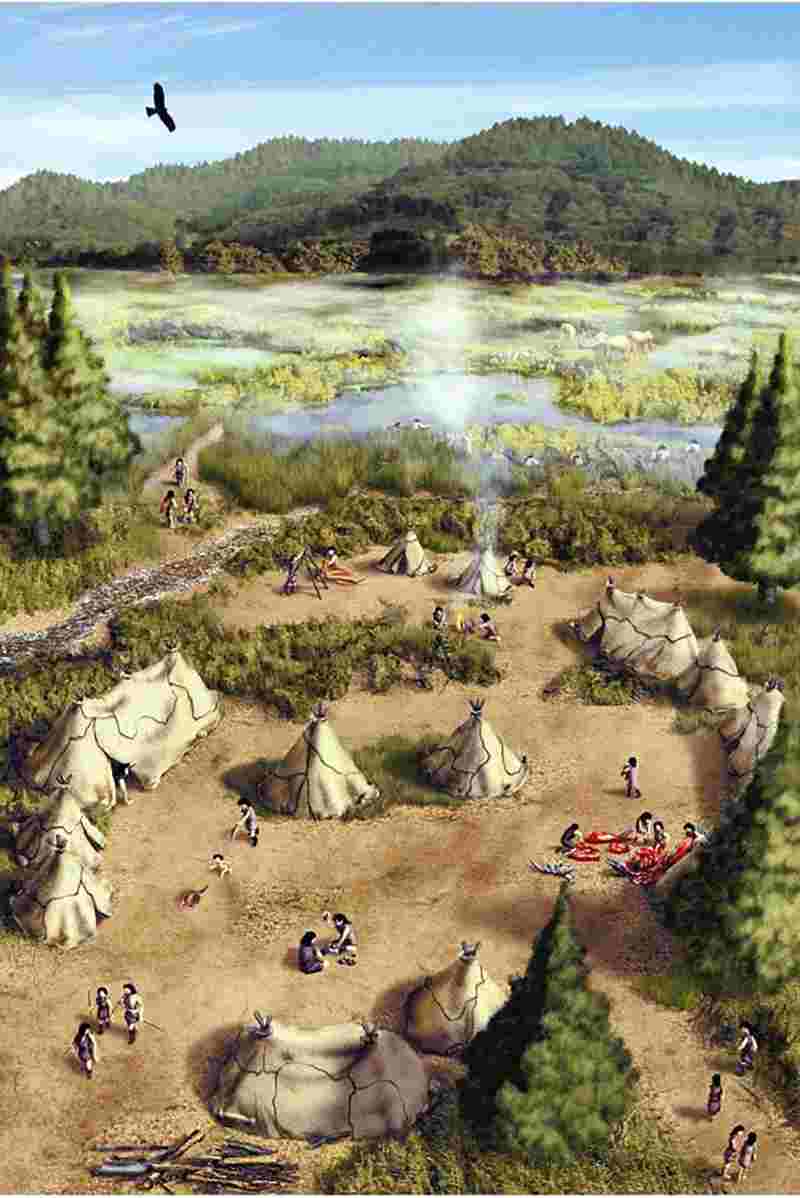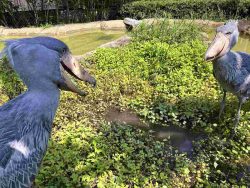
An illustration of the Kamibayashi Ruins in Sano, Tochigi Prefecture
14:59 JST, February 1, 2022
SANO, Tochigi — When did humans appear on the Japanese archipelago?
According to the National Museum of Nature and Science in Tokyo, modern humankind emerged in Africa somewhere between 300,000 and 200,000 years ago. Humans left that continent about 60,000 years ago and spread throughout the world, reaching the Japanese archipelago about 40,000 years ago.
This period was called the Paleolithic period and lasted until about 16,000 years ago, before the beginning of the Jomon period (ca 10,000 B.C.-ca 300 B.C.). The temperature was lower than it is now, and the people on the Japanese archipelago were believed to have worn animal fur, roaming in small groups and chasing animals with stone tools attached to spears.
However, since the 1980s, more than 100 sites of large circular arrangements (called ring blocks) have been found one after another in Japan, suggesting that people were camping in large groups in the early Paleolithic period. Hunting, dismembering large animals and exchanging information are thought to have been the reasons for the camps, although many experts believe they were a seasonal sojourn.
At the Kamibayashi Ruins, which were excavated in the 1990s on a plateau in the southeastern part of Sano, Tochigi Prefecture, one of the country’s largest ring block sites was discovered. It measured about 80 meters by 50 meters.
Hiroshi Idei, 62, director of the Sano public cultural promotion foundation, was part of a research team that conducted the excavation. He said the unearthed stone tools date back to between 32,000 and 30,000 years ago.
The analysis showed that the stone tools can be classified into two groups: those made of stone from the region and those collected far away from the site.
Of the 3,540 stone tools scattered over a wide area, 1,105 of them had broken sections that matched each other, suggesting that people were exchanging the tools.
Between 50 and 100 people are believed to have sojourned there.
“Two groups came together to form a large group who were interacting or exchanging information,” Idei said, adding it was possible they settled there across the seasons, rather than staying temporarily.
This was considered a relatively warm period during the ice age, and people not only hunted animals, which gathered at the swamp near the Kamibayashi Ruins for water, but also collected nuts and plants.
“The stable food supply is thought to have sustained a large group,” Idei said.
Related Tags
"Features" POPULAR ARTICLE
-

Sanrio to Open Museum in Yamanashi Pref. Dedicated to Founder, Exhibits Include Hello Kitty, Other Characters
-

Autumn Foliage Surrounds Visitors to Tokyo’s Showa Kinen Park
-

My Daughter No Longer Speaks to Me, But I Want to See Her and My Grandchild
-

Kumamoto: Public Bath Refurbished as Library Where You Can Chat, Take Photos
-

Frozen Vegetables: Demand Rises for Convenient, Tasty Domestic Produce
JN ACCESS RANKING
-

Keidanren Chairman Yoshinobu Tsutsui Visits Kashiwazaki-Kariwa Nuclear Power Plant; Inspects New Emergency Safety System
-

Imports of Rare Earths from China Facing Delays, May Be Caused by Deterioration of Japan-China Relations
-

University of Tokyo Professor Discusses Japanese Economic Security in Interview Ahead of Forum
-

Tokyo Economic Security Forum to Hold Inaugural Meeting Amid Tense Global Environment
-

Japan Pulls out of Vietnam Nuclear Project, Complicating Hanoi’s Power Plans


























